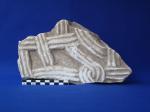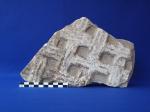
Illustrations
- No uploaded files
Description
- Medieval low relief
- White marble
- 1
- 23.0
- 15.0
- 7.0
- Both the front and back faces show signs of weathering, especially in the recessed ground of the relief. The block suffered breaks on all sides. That its original limits are much reduced is clear from the interlace pattern preserved on side a, of which only the edges of two circles remain. This side is the better preserved of the two. The the trisected bands are worn so that the ridges soft and rounded, except in the uppermost area of side a, where they remain sharp and pointed as, presumably, they once were all over. Traces of white mortar partially obscure the carving on side b and suggest that the fragment was reused as building material.
- One side of the fragment (AE 1034a) has an tri-band intertwining circle motif. On the the opposite side (AE 1034b), trisected bands crisscross in a net or basket pattern.
- The fragmentary nature of the piece makes the exact pattern preserved on AE 1034a difficult to identify with certainty. It seems to be an elaborated variation of the interlocking-circle-and-grid pattern preserved in AE 1061a, which was very common. Numerous examples survive in Rome as, for example at SS. Bonifacio e Alessio, S. Saba and S. Sabina (Trinci Cecchelli 1976, nos 12–13, 102–03 and 249). A fragment dated to the Papacy of Leo III (795–816) from S. Andrea Cata Barbara (Pani Ermini 1974, vol. 1, no. 17) and a fragment in Rome's Museo dell'Alto Medioevo dated to the early ninth century (Melucco Vaccaro and Paroli 1995, no. 44) bear examples of grids of double interlocking circles similar to AE 1034a.
- The motif (side a) is a more complex variant of the interlocking-circle-and-grid pattern on AE 1061a; the net or basket pattern (side b) may be found on several other fragments: AE 1036a, AE 1051b, AE 1053 and AE 1168a. A number of fragments were carved in low relief on opposing sides: AE 824, AE 1036, AE 1051, AE 1055, AE 1061, AE 1114 and AE 1168.












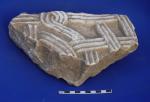
![Download [view]](/villamagna/ark//skins/villamagna/images/results/download_sml.png)

